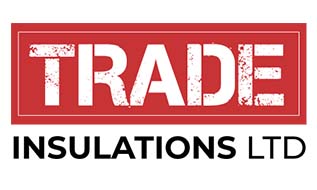Installing a screed layer is a project commonly carried out for floors within home and work projects. See the below step by step guide on how to screed a floor and all the tips you need to know.
Please note this is just a guide and if a screed project is not completed to the best quality, it can easily be damaged at a later stage. The screed can begin to break up and can result in the screen work needing to be done again. This can a very expensive project. Screeding a floor is an incredibly hard project if you do not have experience, training, and the basic tools required to screed a floor. It is crucial that the correct training is completed before screeding your floor or a trained building professional is called in to complete the job. See the below how to screed a floor step by step guide.
How to Prepare a Floor for Screeding.
Always have a plan in place before screeding a floor. The floor will need to be measured before the screed starts and the correct amount of screed materials will need to be purchased to match the space.
You will also need to reinforce the layer your screed will sit on if you are intending to use unbonded screed or expose the aggregate and apply a bonding agent if your screed is bonded. Dust and debris should always be swept away and the floor left clean and tidy before the work continues, and the site must also be shown to be watertight.
You may also need to mix up the screed for a concrete floor if you are planning to use an unbonded screed. By adding polypropylene fibres into the mix and combining water, you will lessen the chances of your floor developing micro-cracks over time.
Get you equipment ready, the below list is recommended when screeding.
- Tape measure – to measure the size of the room and calculate how much mix will be needed.
- 100mm x 50mm timber battens – to divide the room into sections.
- Spirit level – to ensure the divided framework is level. A four-foot level works best here.
- Shovel – To mix and load the screed.
- Wheelbarrow (or buckets for smaller amounts of screed) – essential for getting the mix from one place to the next quickly.
- Straight edge (or a piece of excess timber) – to run along the framework and level the floor for a flat and smooth finish.
- Trowel – used to move the mix into place and give a reasonably smooth finish.
- Float – to give that all important super smooth finish.
- Protection – Gloves and knee protection should be worn throughout, to avoid irritation caused by cement.
Screeding a floor can be a complicated process, see the below guide:
- Divide up Your Floor Area into sections:
When beginning the process of screeding your floor, you will need to split it up into sections. This can be done with a divider. If you do not have a divider using long, straight pieces of timber that are cut to the height of the layer required, is recommended. Wet the pieces down so that they can be easily removed after and divide the room into sections.
- Apply a Layer of Screed tot
Spread out a dense layer of the screed mix on the section of the floor farthest from the entrance of the room, using a trowel to move the mixture and compacting it with a screed board or straightedge. Tamp the edges with a tamper to help finish the section.
Poor compaction is one of the more common problems when laying screed and often happens during this process.
- Levelling a Floor with Screed
If your screed is not self-levelling (sand and cement screed), you will need to use an object to level the screen, a straightedge, or a straight piece of timber to level the floor can be used. Place the straightedge over the timber pieces that have been used to divide the sections and push it forward, use the corner as a cutting whilst moving it side-to-side in a sawing motion. This will level the screed layer.
If your screed is self-levelling, such as liquid screen, it will have an agent in the mixture that will react when the screed is poured out, causing the mixture to compact by itself. This ensures that the screed level will already be smooth when the screed is completely dried.
- Repeat the Process
Continue with this process until you have completed each divided section. The timber dividers can then be removed, and the gaps left can be filled in. Repeat this process until your entire floor has been screeded.
- Float the Screed
You will be able to remove some blemishes from the new screed floor layer as soon as it has been installed, and once again after the concrete has accurately bled.
- Cure the Screed
When screeding a floor, the time it takes will depend on the screed that you apply and the size of the room. An average time of seven days is estimated for the screen to cure. Seven days applies if the screed is left undisturbed under a polyethylene sheet which is sealed at its edges. This may take longer if the temperature in the area falls below 10ºC in a 24-hour period.
- Let the Floor Dry
After the floor has been cured, it will not yet be dry and will need time to dry out. Prevent letting vehicle traffic onto the new screed and heavy traffic in particular, should be avoided until installation is complete. Prevent installing any other layer of flooring onto the screed for at least three weeks after screeding.
How Much Does It Cost to Screed a Floor?
The cost of screeding a floor will depend on the price and quality of the chosen screed, and the amount you will need to apply to the relevant floor space. Work this out by finding out what area your screed product will cover, and times this by the size of the floor for a rough price.
Contact the Professionals
Attempting to screed a floor without the relevant equipment and mix and proper training can end up costing time and money. Fixing a screed not laid right will be expensive and can put major delays on a project.
Please note this is just a guide and a screed professional should always be consulted before screeding a floor to avoid damage and extra costs occurring.

